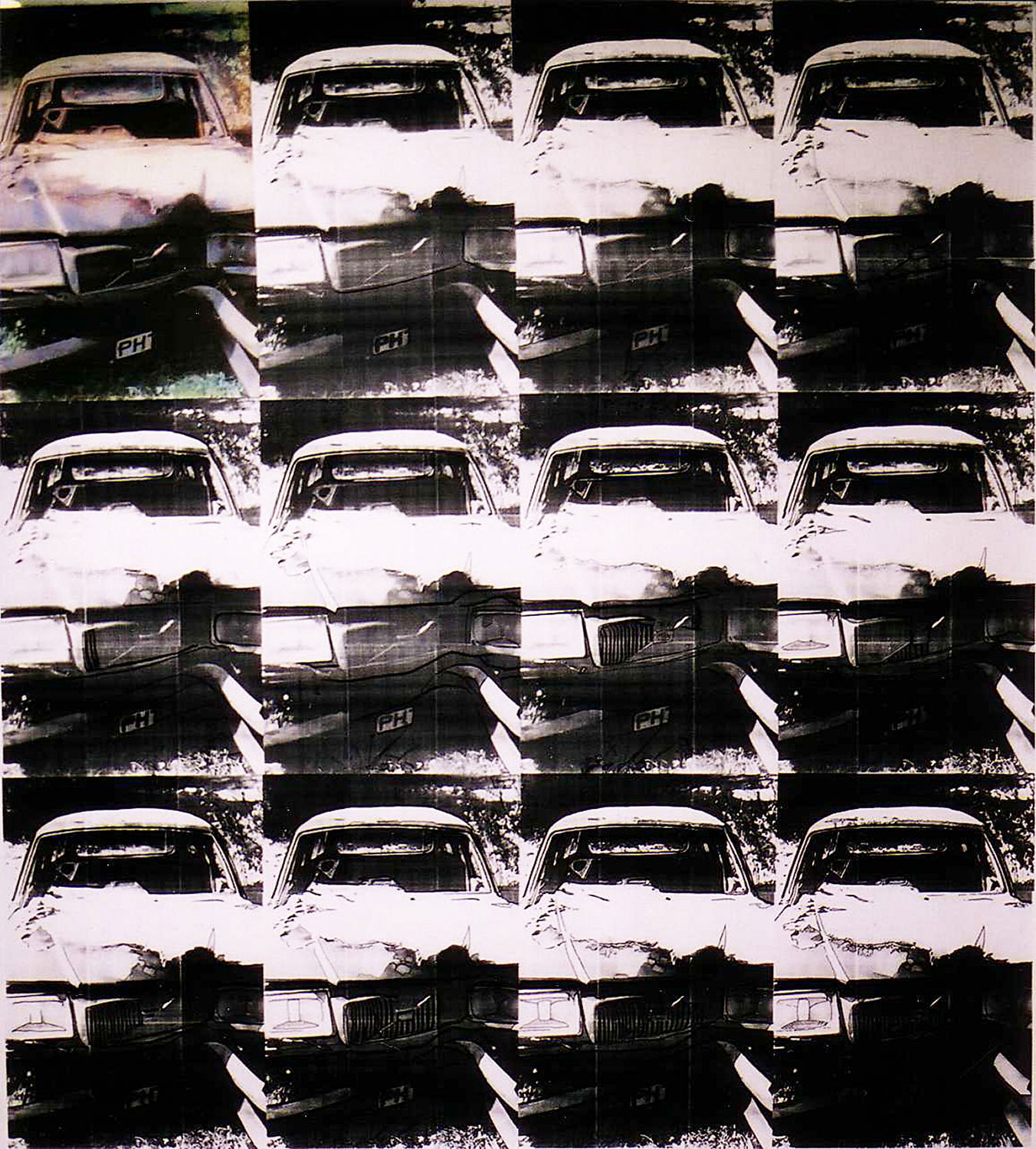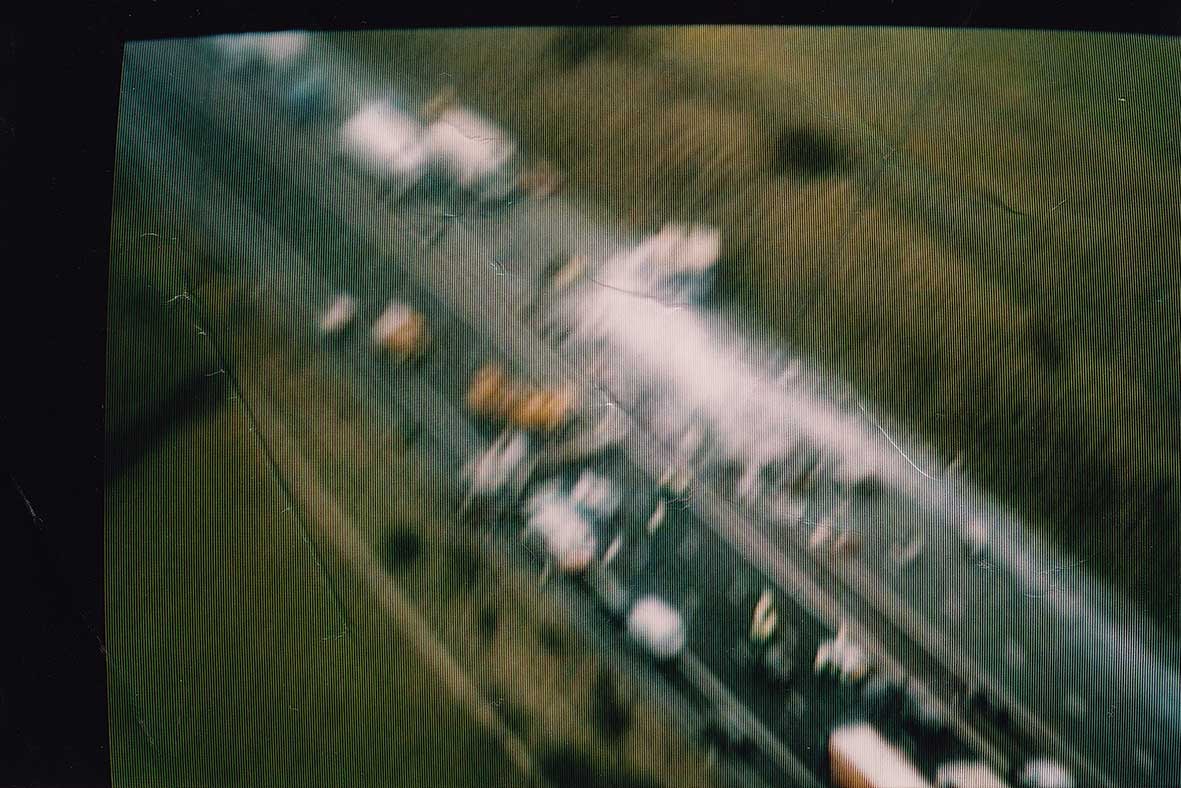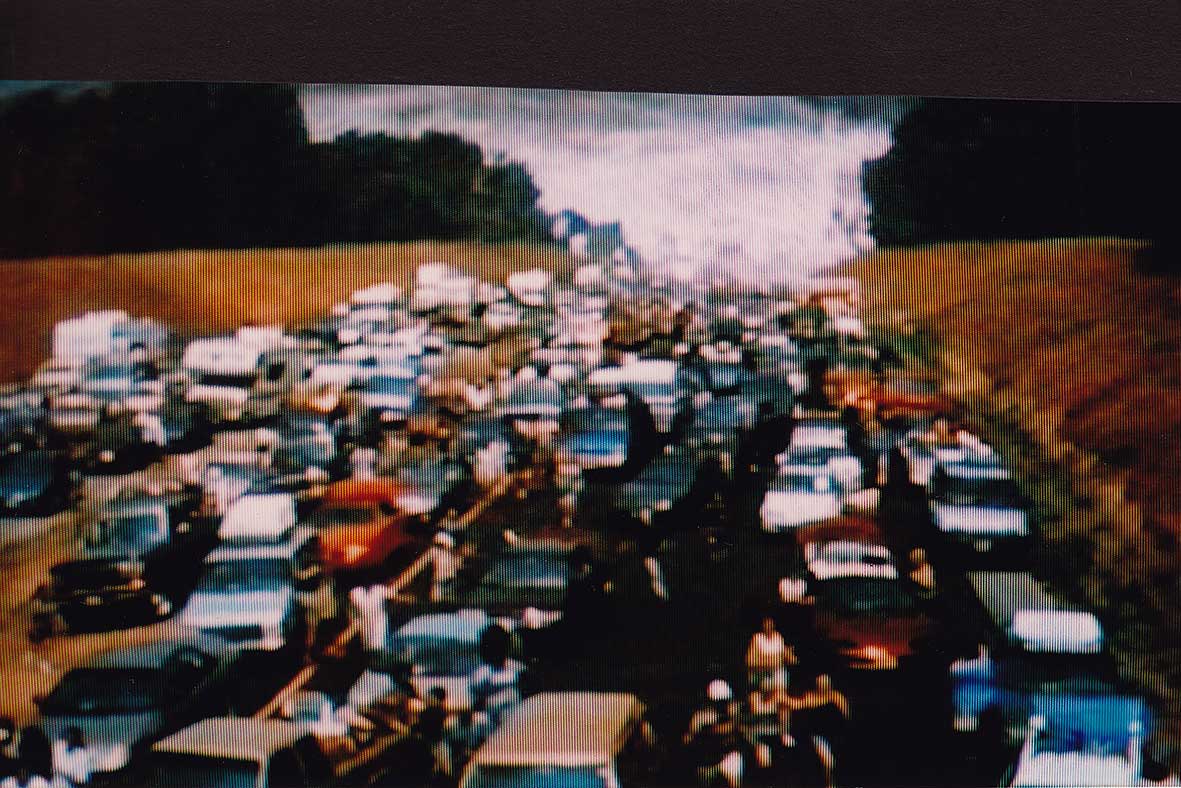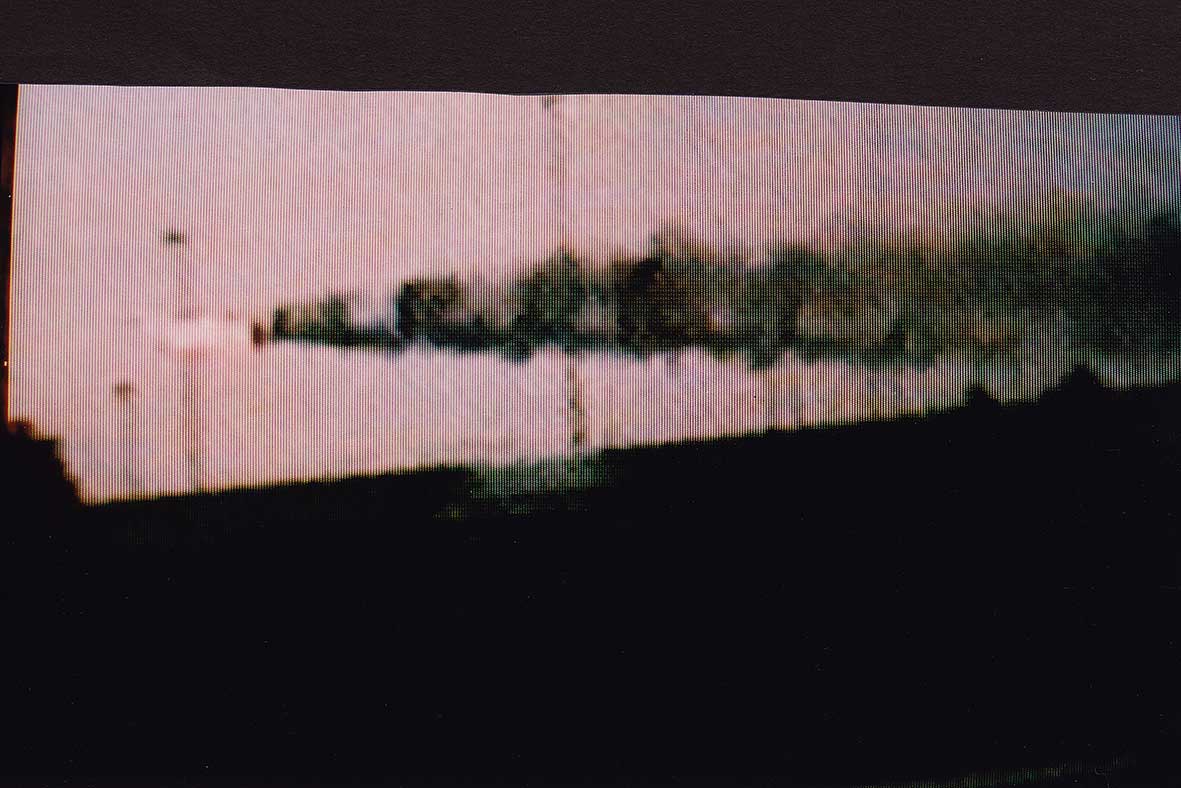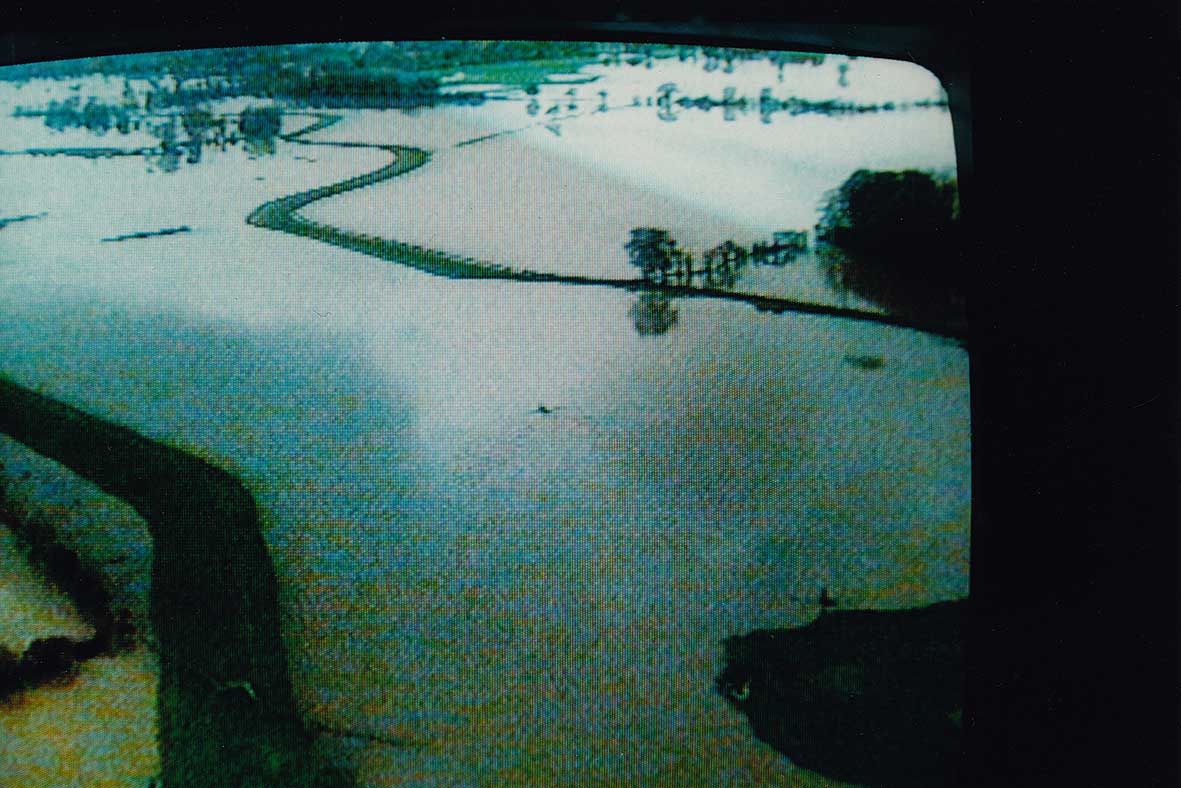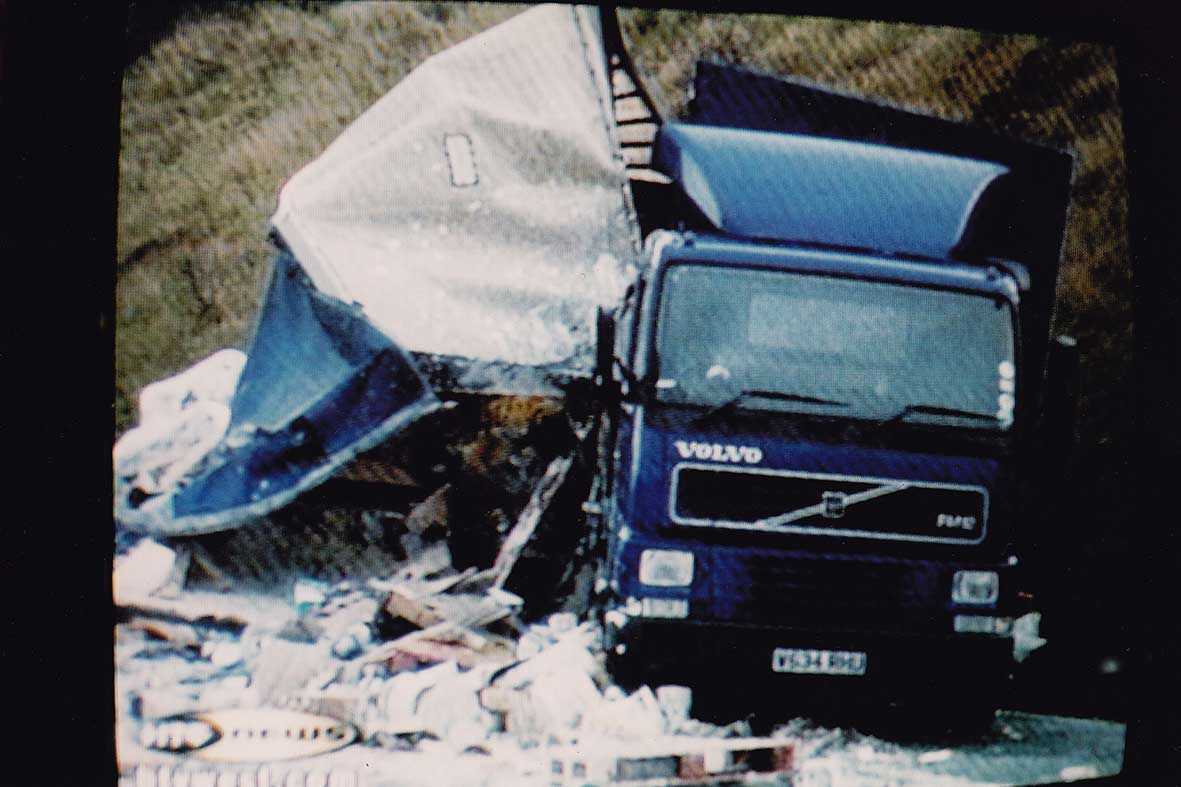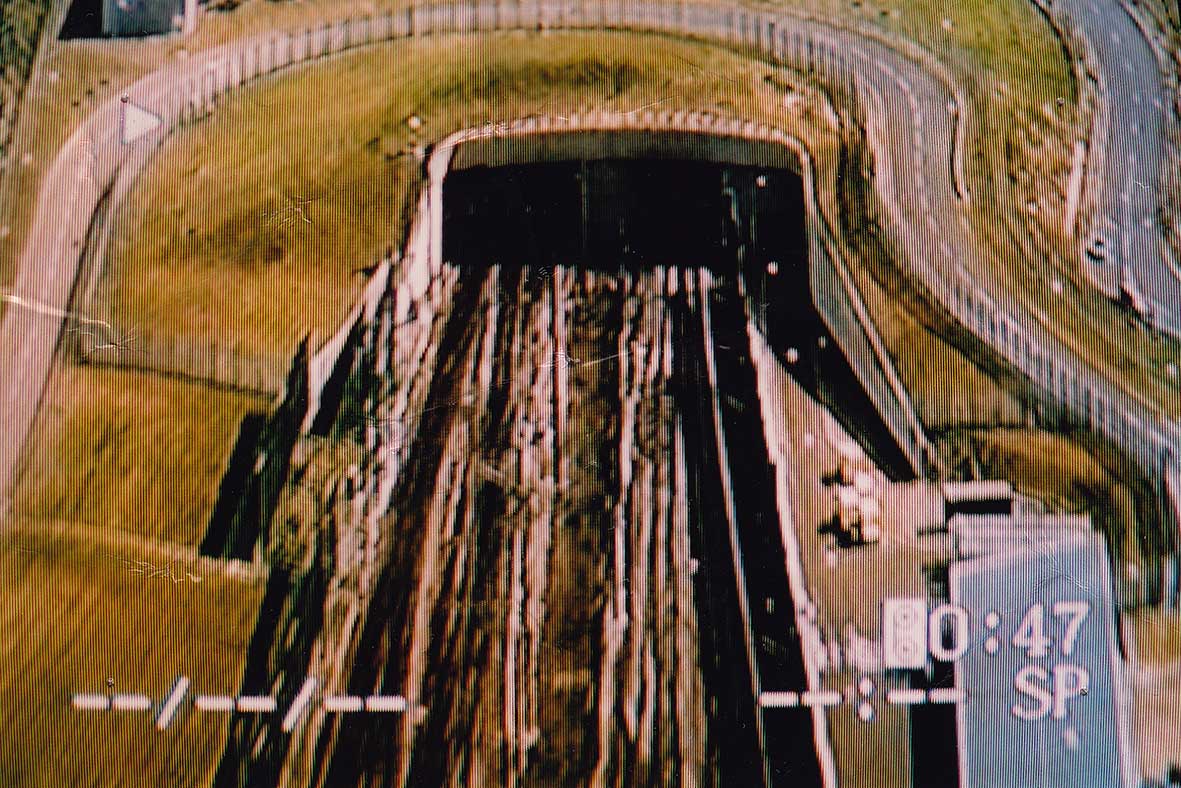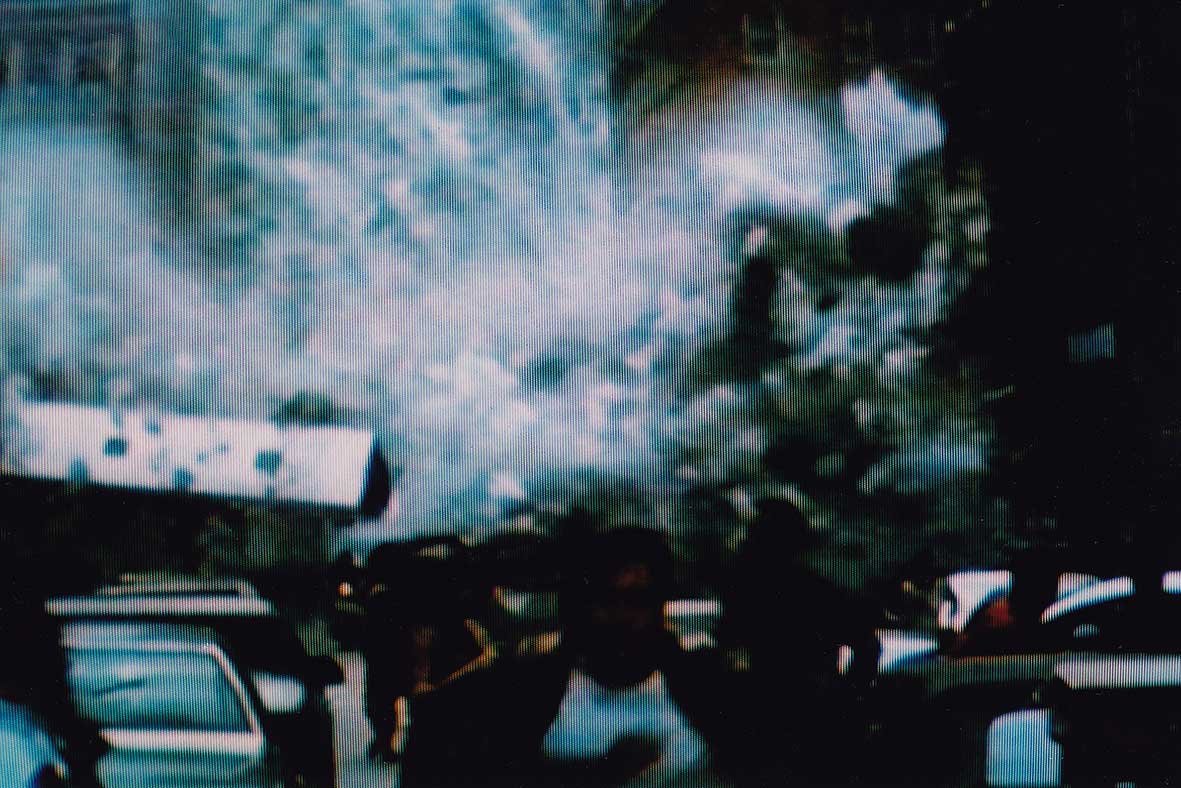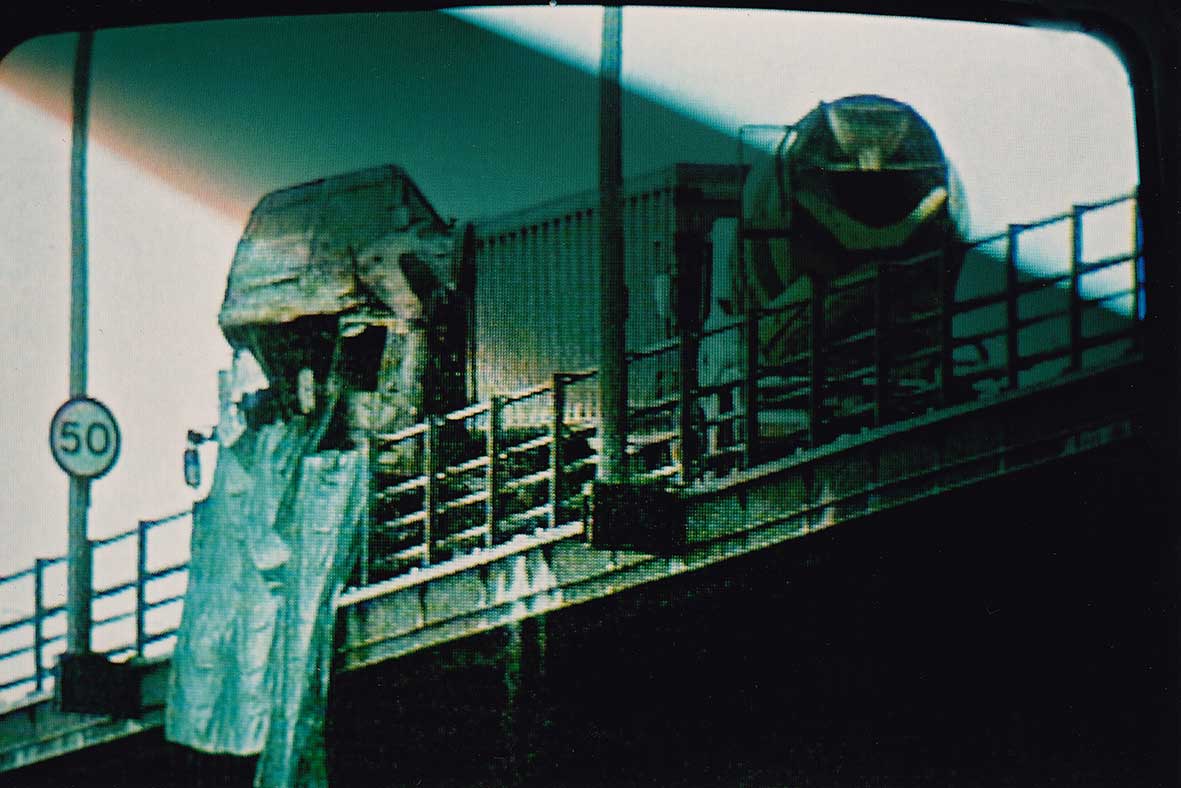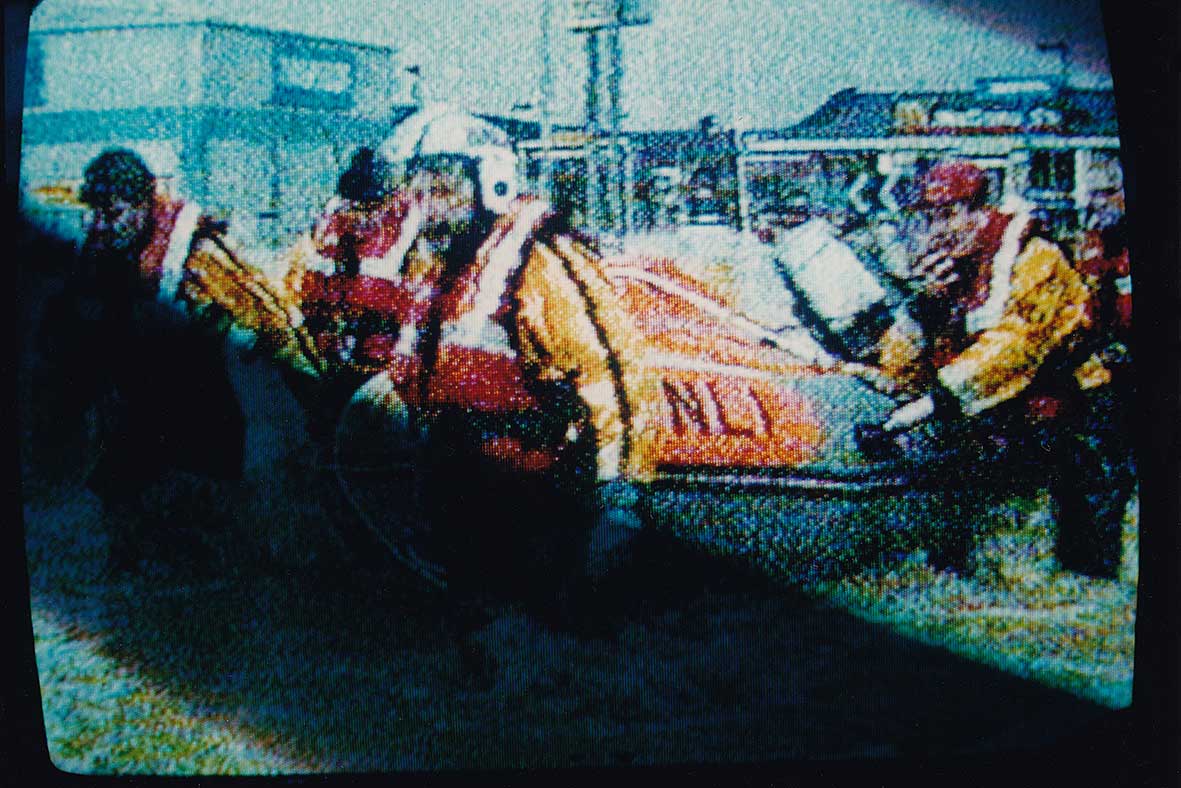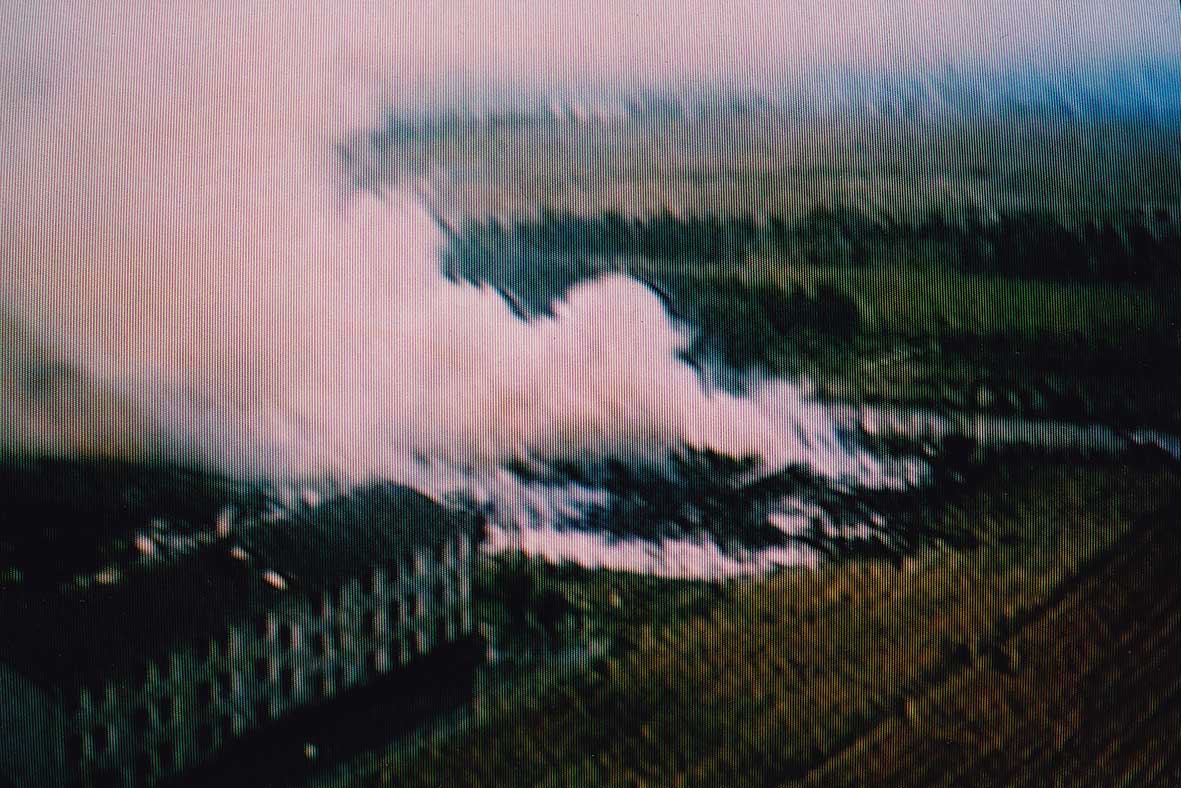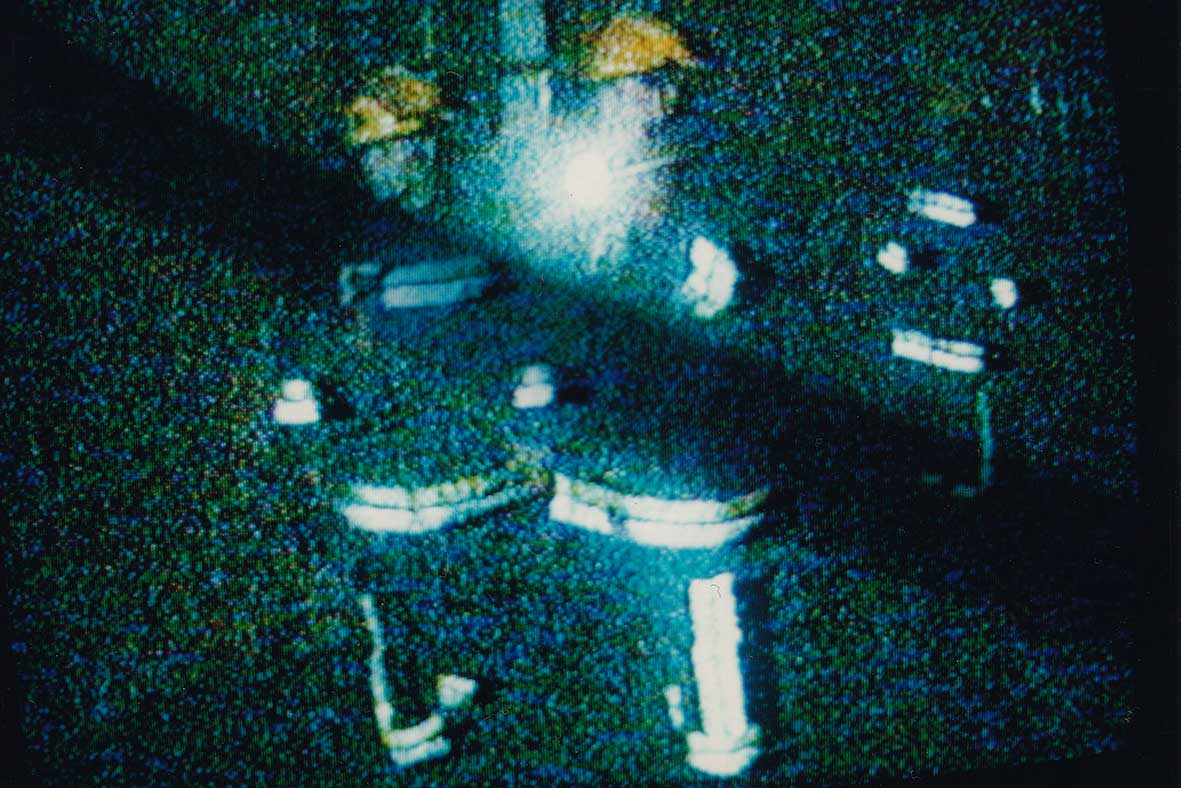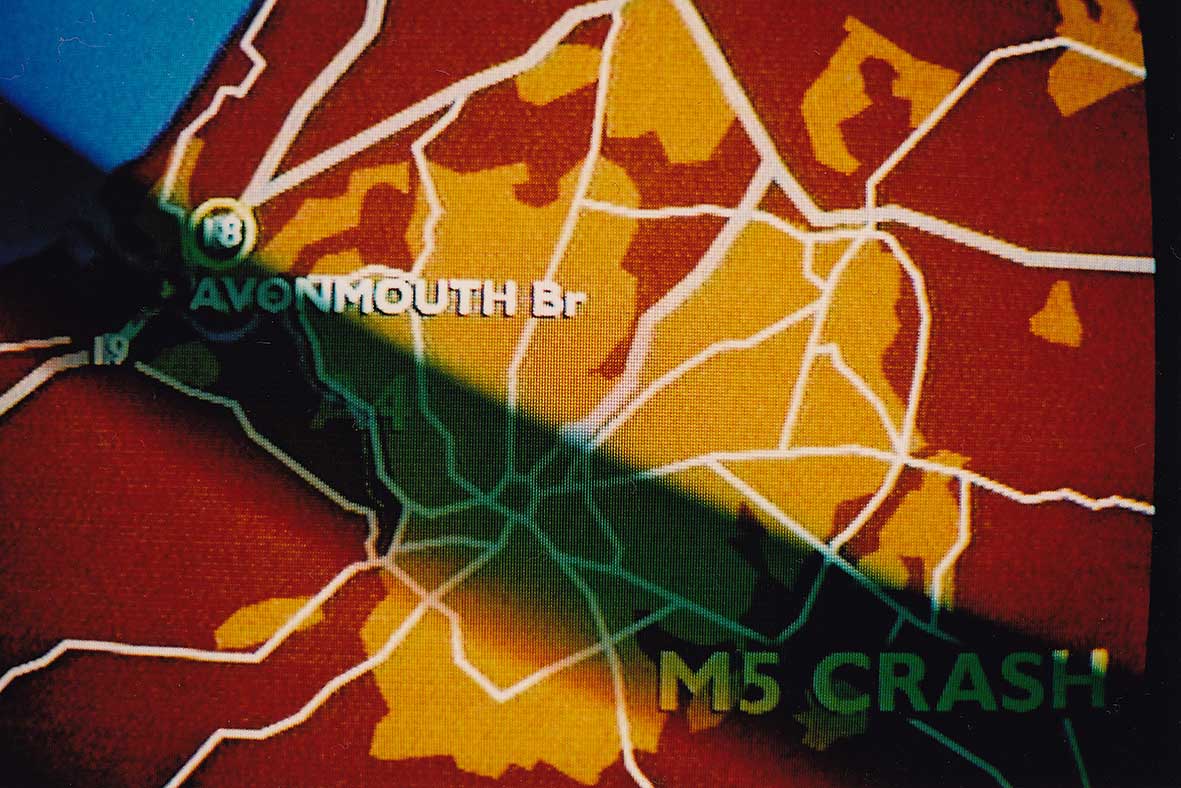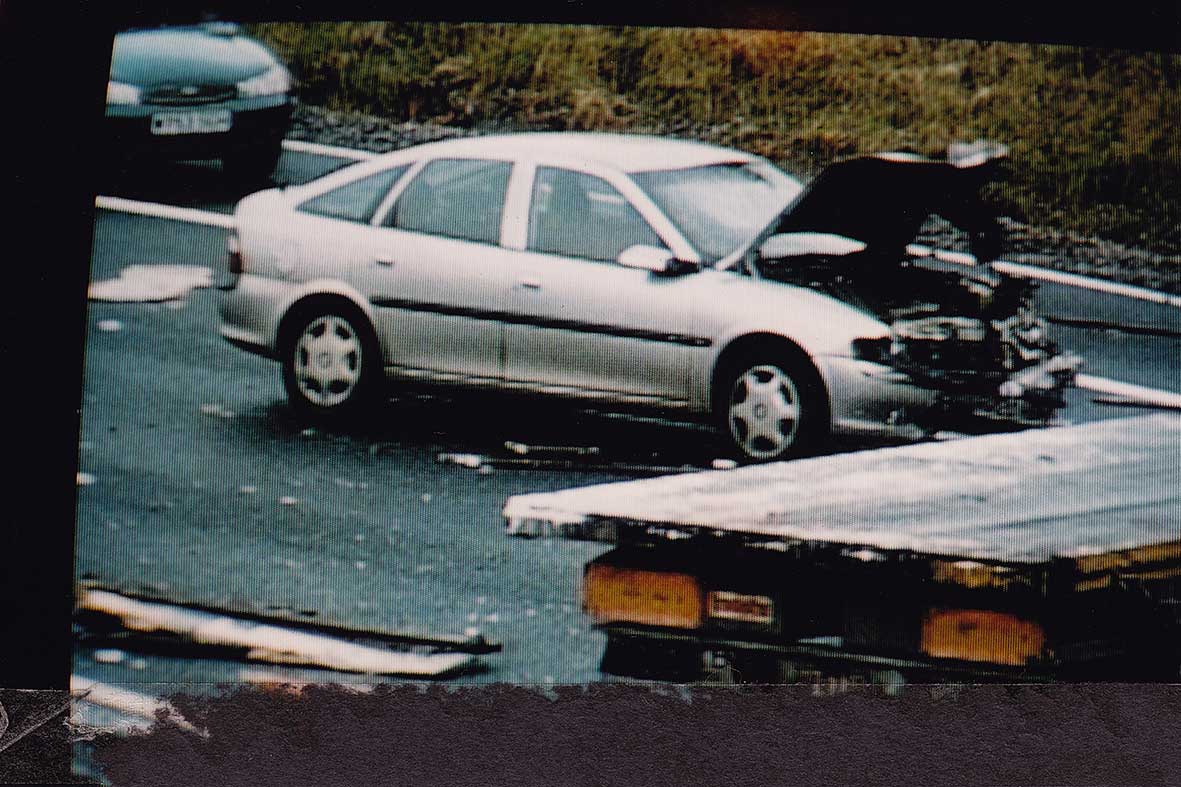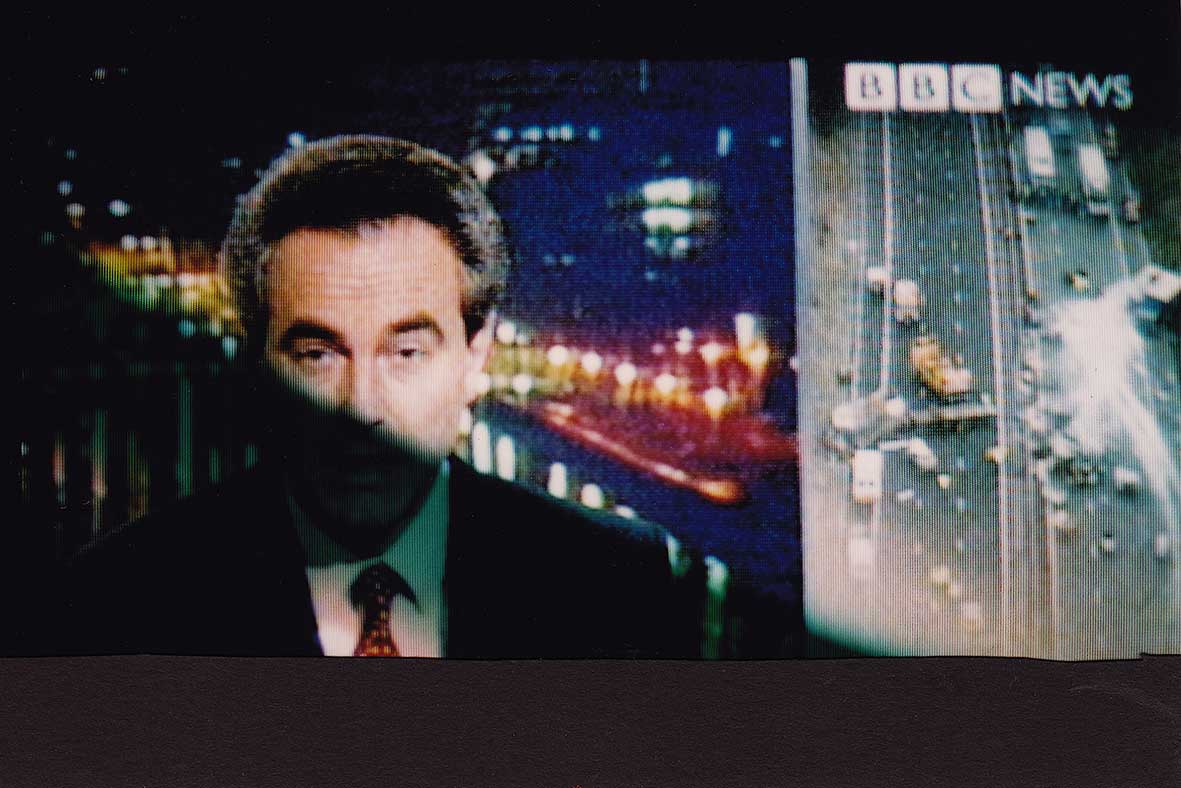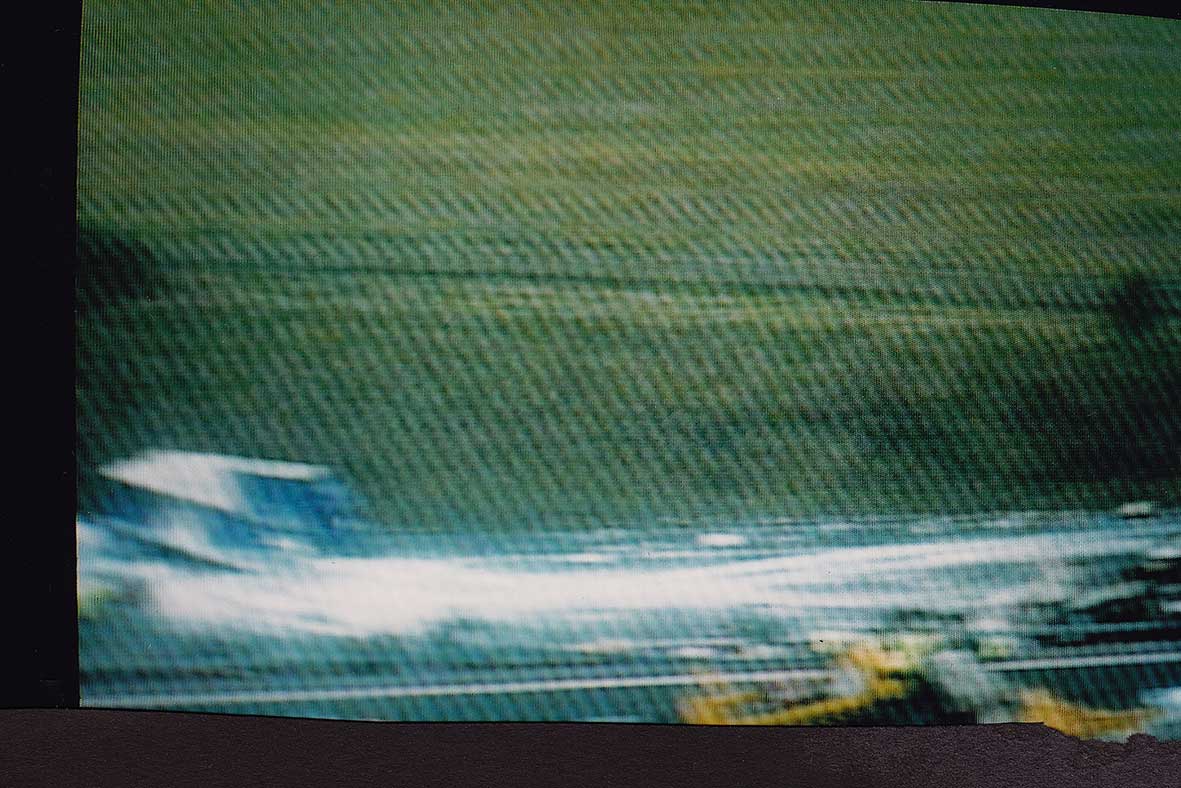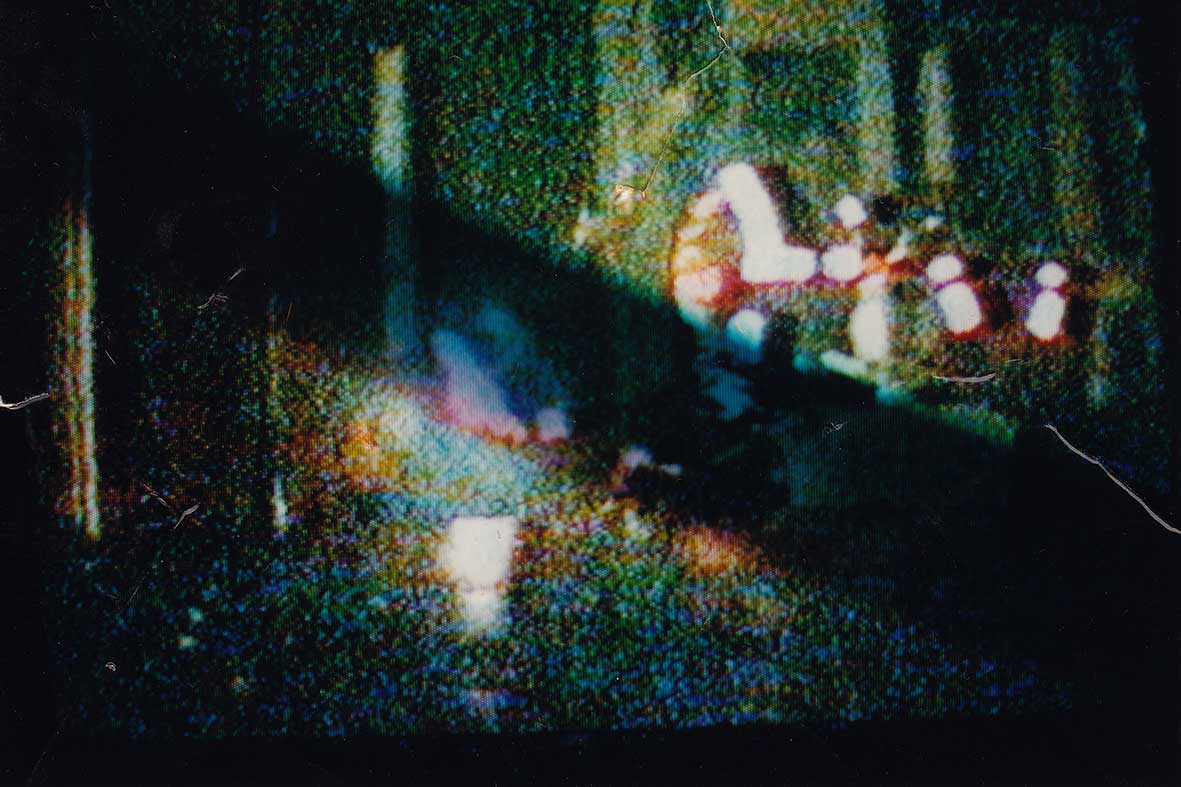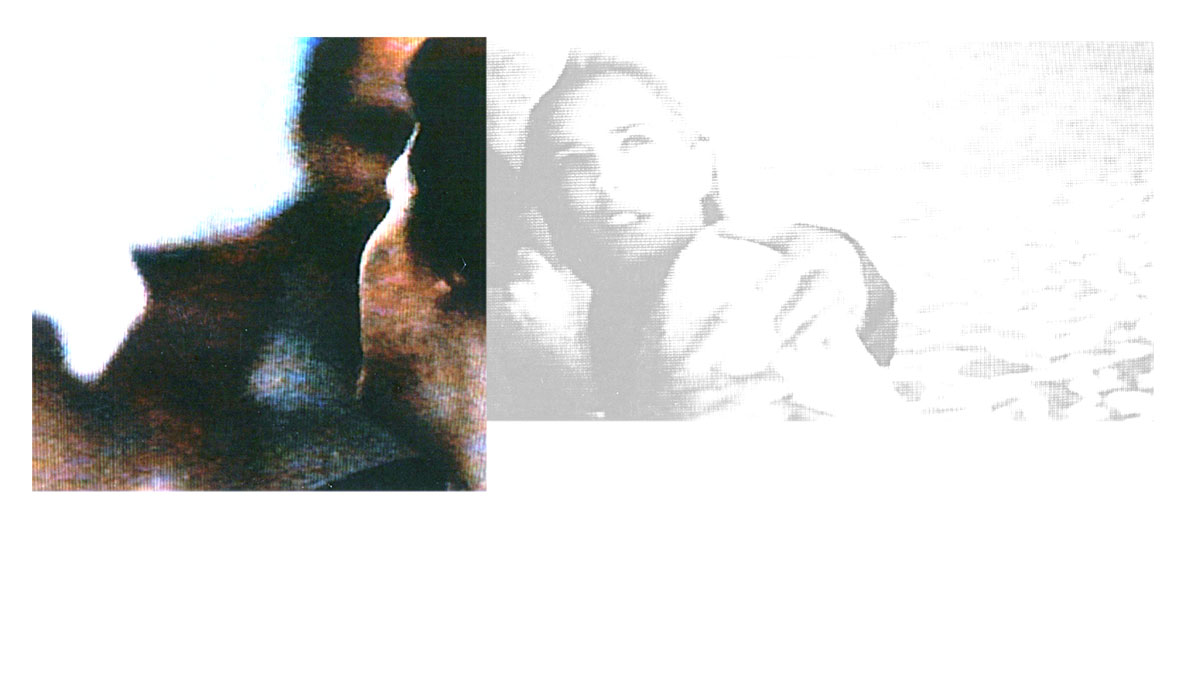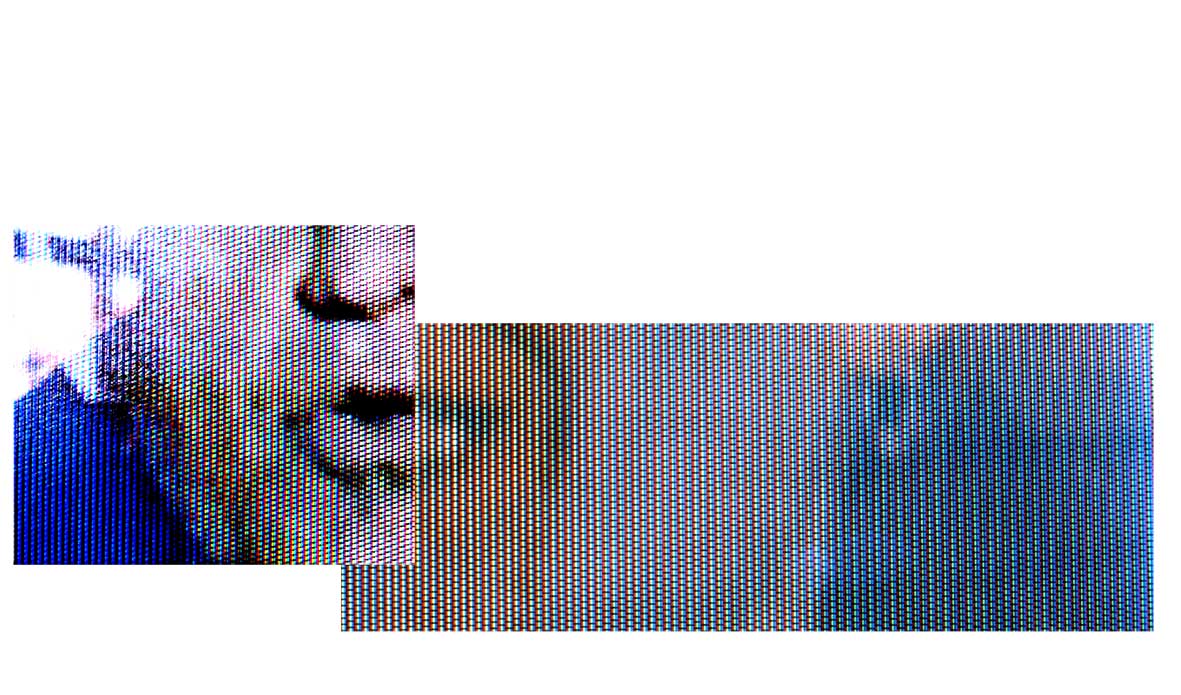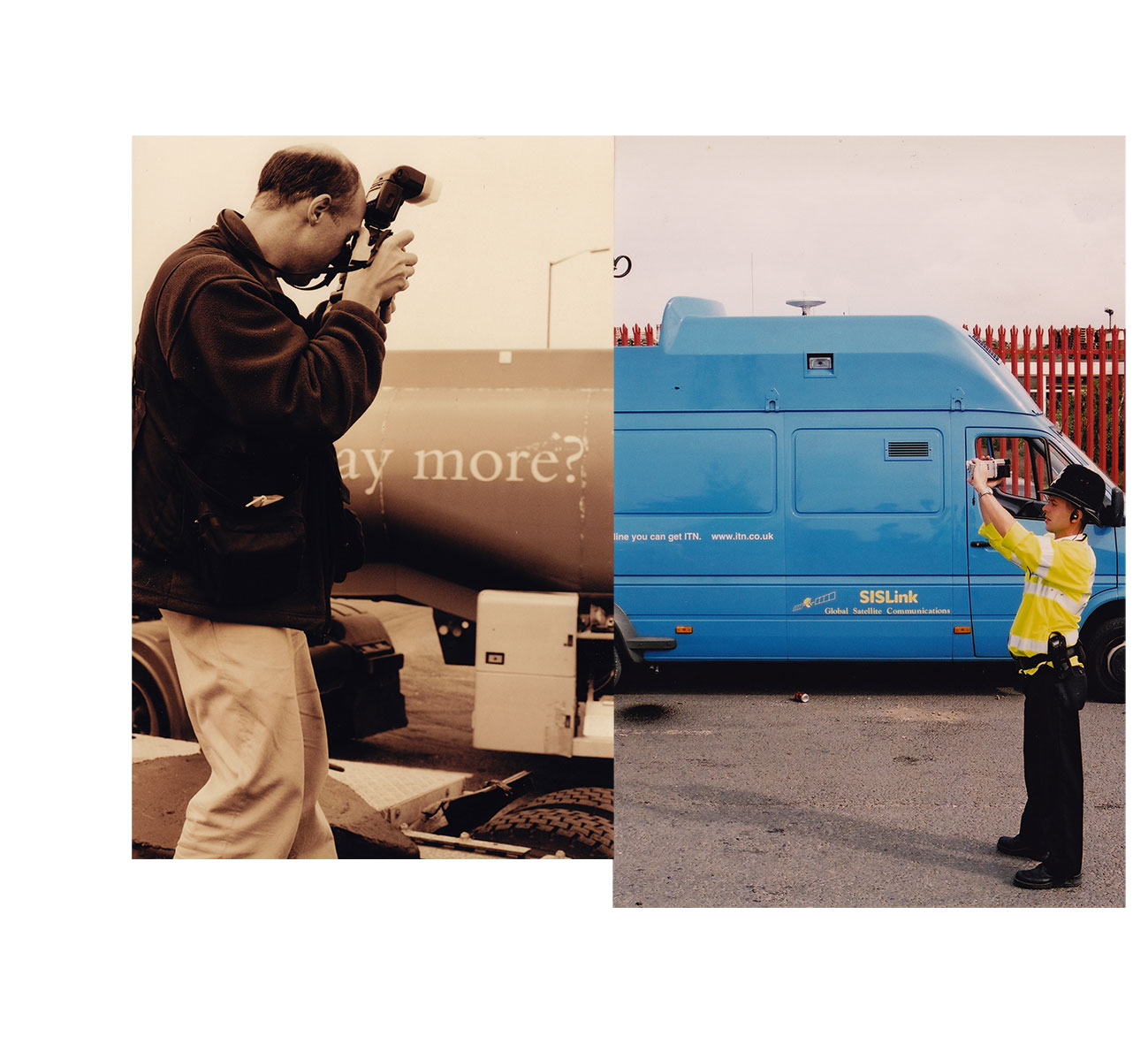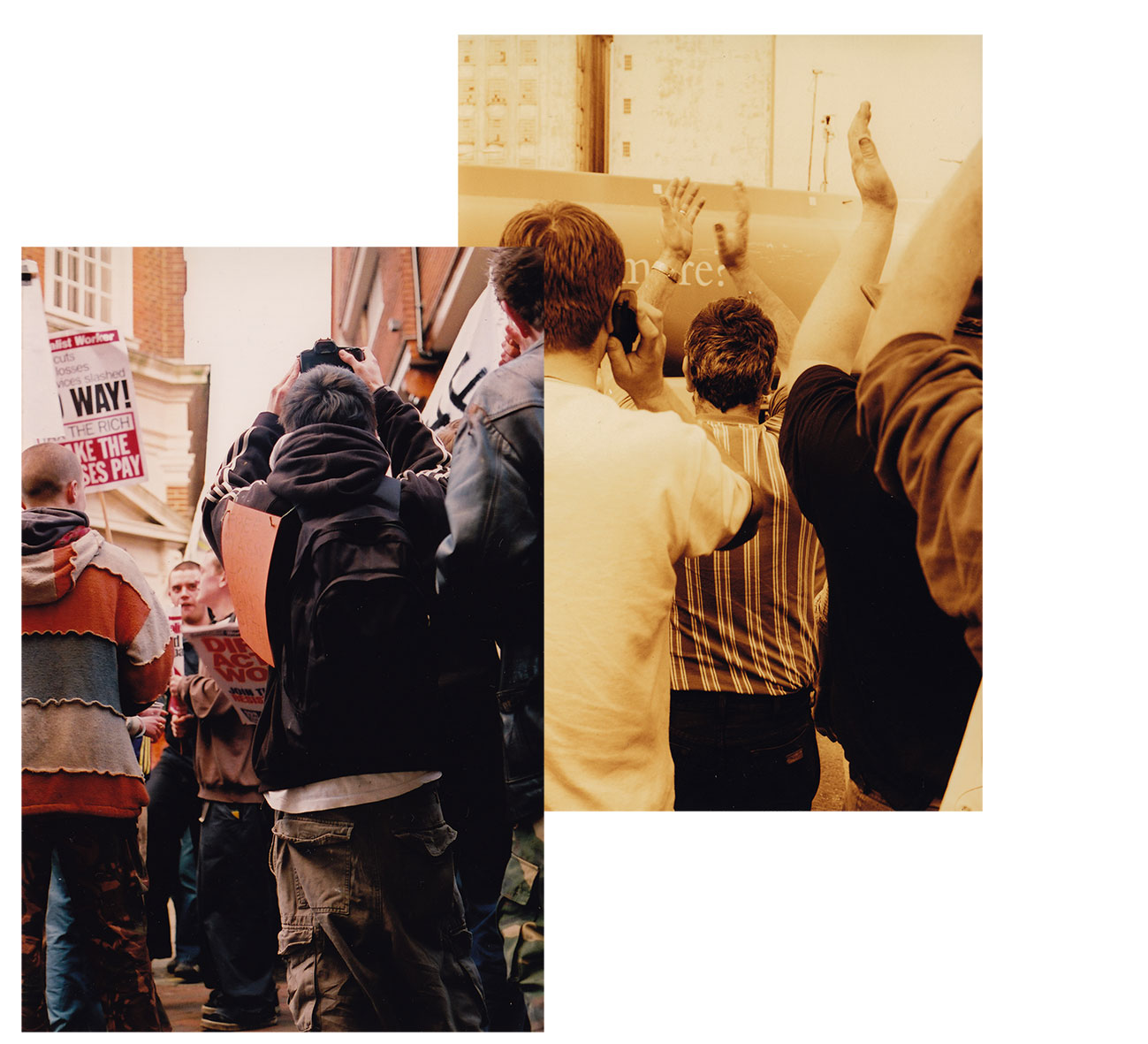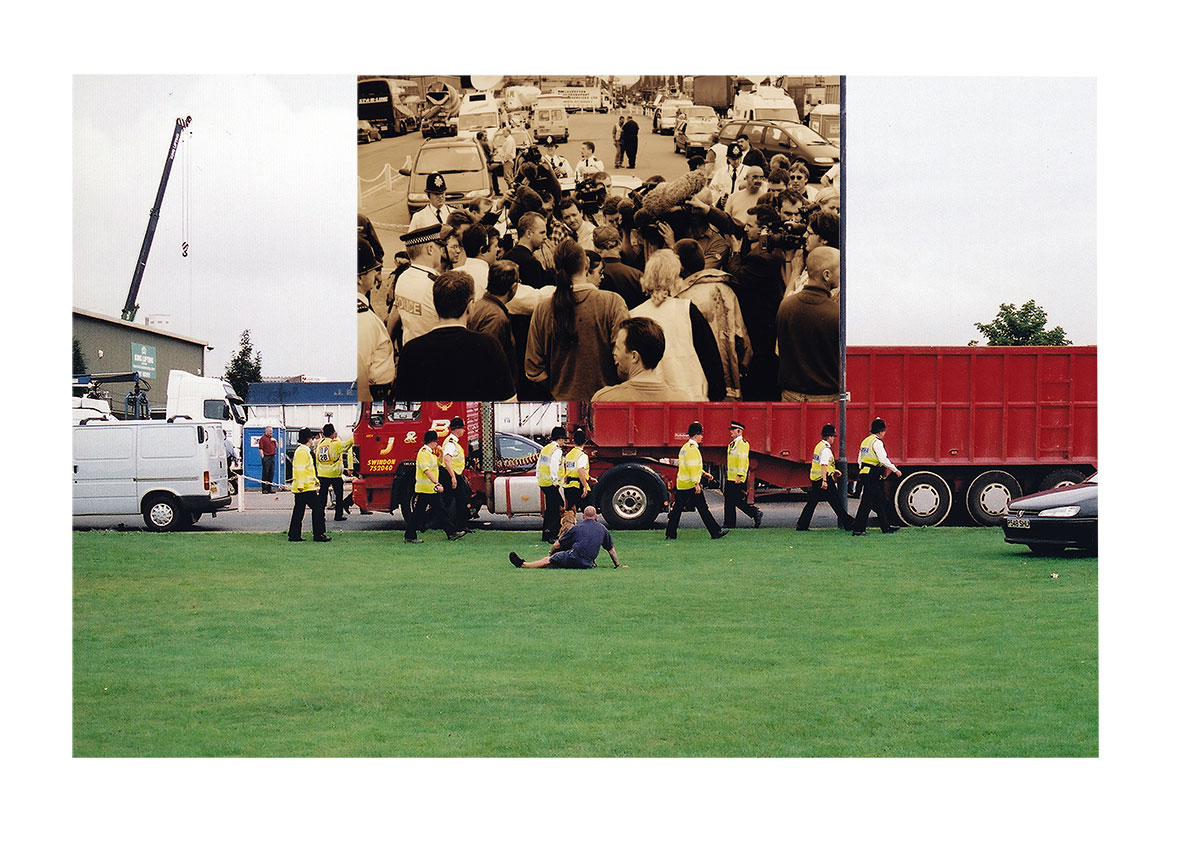CRASH
2000-2001
6″x4″ prints on Fujifilm, Kodak, and Agfa paper
18″x12″ hand-developed silver gelatin prints
inkjet collages mounted on hardboard
shot on an Olympus OM10 (35mm), screen photos of a CRT TV
Emerging from a degree course in Fine Art (UCA), this early body of work describes my experience of photography’s junction between report and art as both a triumph and failure of communication. I photographed local student protests over UK tuition fees, and trucker protests at Avonmouth, Bristol, during one of the fuel strikes occurring nationally across Britain. I also documented televised news reporting of a concentration of disasters (prior to 9/11): Concorde’s crash, M4/M5 collisions, train derailments and severe flooding across the South West. The pixellated, symbolic and spectacularised content of these images became synonymous with the dramatic representations of Independence Day (1996), also photographed on screen.
The ‘truth’ of the real events is interpolated by photography’s transience and indifference: whether shown up by a printer’s ink fade (Bleeding Just To Feel Alive) or of a website’s (re)structuring (for the exhibition WWW in the Herbert Read Gallery, Canterbury, I created a visual manifesto online, ‘Globally Terrorised’). For my thesis, The Trauma of Separation (2001), I focussed on the uniformed representations of reporter, rescue workers and the police. Truth in reportage photographic representation is less about the autonomy of the image, in the what or how it communicates, than it is about the authority of the image and in the who is using it. Yet it veils in iconic anonymity even the personified embodiment of this authority, whose photographic reality I experience as a trauma (Hal Foster, The Return of the Real, 1996).






